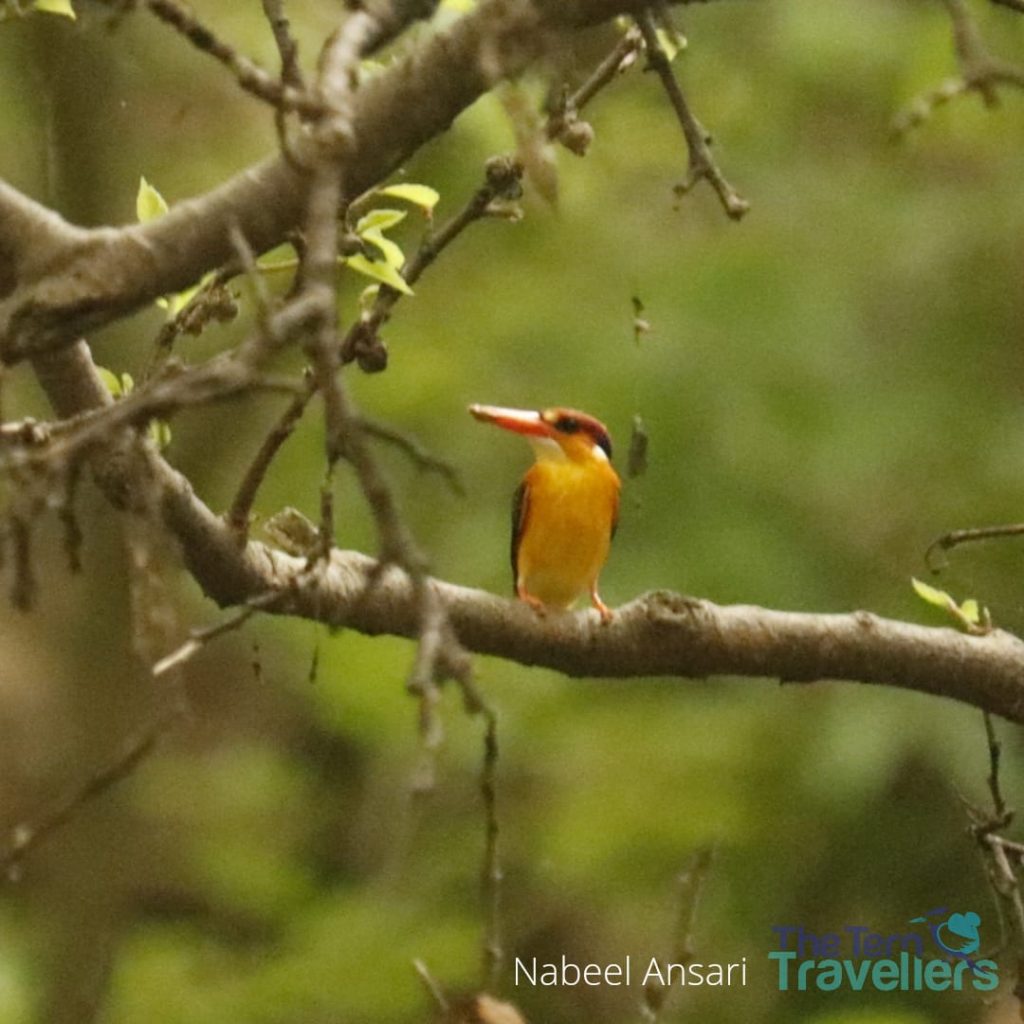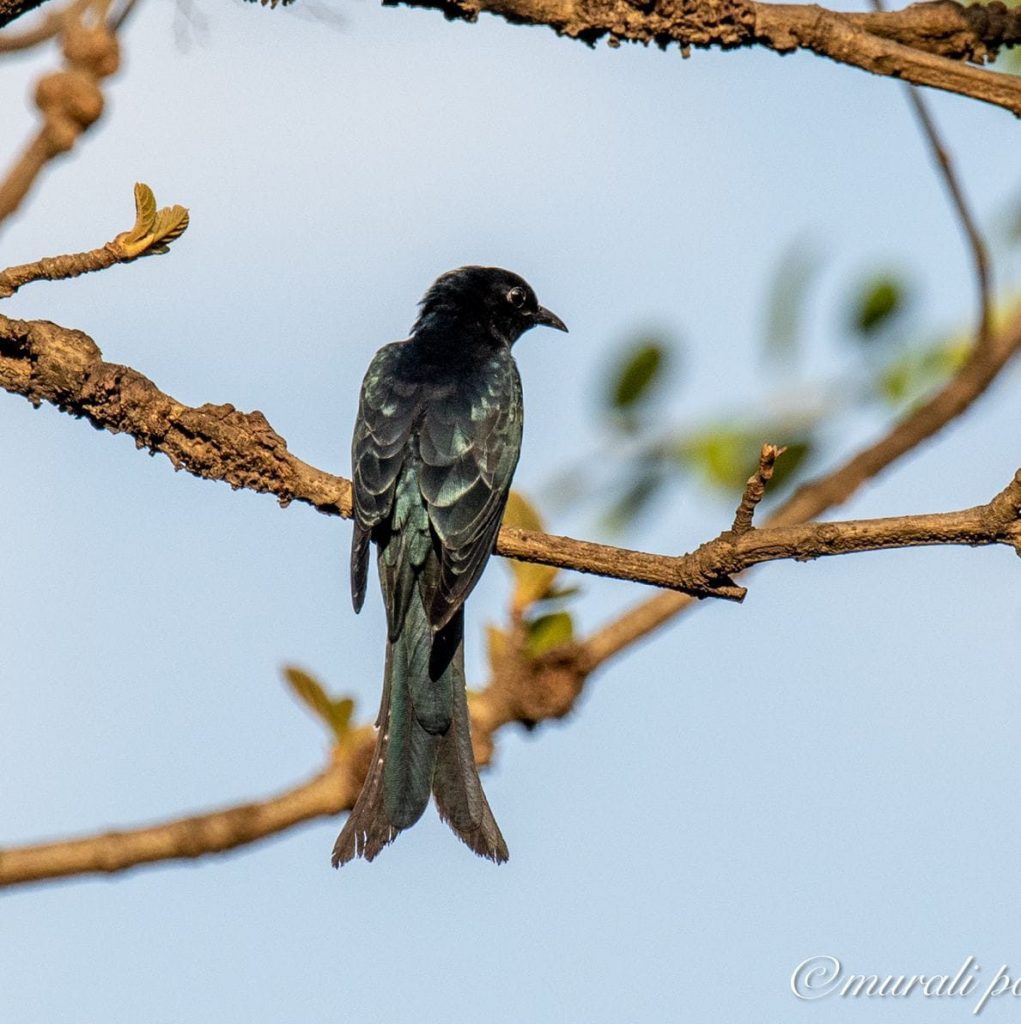Nagla Block trail an extension of SGNP on the northern end across the Vasai creek adjoining the western express Highway is a delight for nature and bird enthusiasts.
PREFACE:
It is a beautiful Sunday morning. And you are willing to spend it away from the crowded city. To keep appreciating the rakish life of the metropolis, sometimes it becomes necessary to surround yourself with wilderness. Away from the sound of the television, honking vehicles; the background sound of children or someone preparing their grub. You want to get away from all of it and ought your children to learn its importance too? A trip to Nagla block is a treat for someone like you.
Nagla Block is an extension of the Sanjay Gandhi National Park, which lies beyond the Vasai creek. The Nagla block covers 17% of the SGNP forest and forms a corridor to the Tungareshwar wildlife sanctuary. This forest cover is a confluence of moist deciduous forest and mangrove vegetation. The vegetation makes the forest pristine for butterfly watchers, bird watchers, and nature enthusiasts.
Just like any trail at the Sanjay Gandhi National Park, you will come across rich biodiversity of flora and fauna while on a course at the Nagla block. What is unique about the place is that it is less popular and even less crowded compared to SGNP. The trail path is raw as you would want it to be in a forest. The less-developed roads dissuade the swarm of regular fitness joggers. It is less of a tourist attraction and more of a researcher and birder’s paradise.
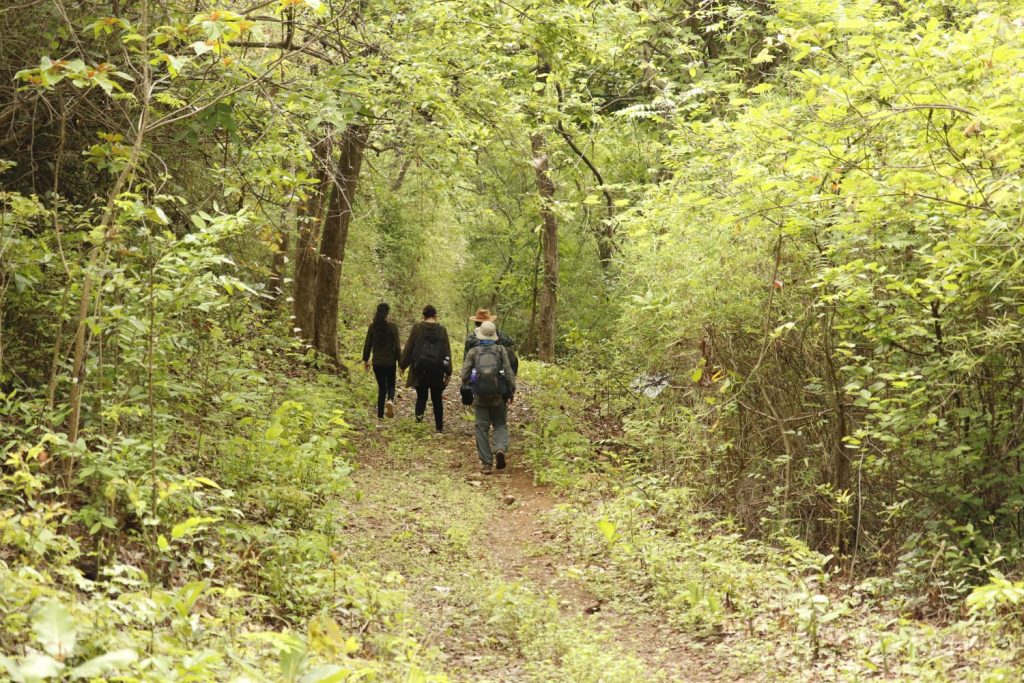
HOW TO REACH?
As a true Mumbaikar, I travelled by the local train and got off at Mira Road station. That’s where the tern(ers) (The tern travellers’ members) gathered, and together we road on the’ Mumbaikar’s chariot’ the auto-rickshaw. The rickshaw drove us across the Vasai creek bridge to a highway. Right in the middle of that highway, on the opposite road, you will see a Dhaba named Sanaya. That’s where you want to get down and walk a few meters north till you reach a lane (NOTE: lane is easily missed by first timers) which leads to the counter of Nagla block SGNP.
Other friends who accompanied us on the trail chose to take a pleasant morning drive to the destination.
OUR EXPERIANCE:
The village of Sasupada rests along the periphery of the forest. The people of this village benefit from the small-scale business, which is tourist-dependent. The small-scale business is an extra income for the villagers, otherwise their livelihood depends majorly on forest resources, fishery and poultry.
Moving forward, no sooner do we enter the ally than we can observe a kaleidoscope of butterflies. Butterflies are seen in large numbers, not just because of the appropriate flora present on the site but also the ideal condition for breeding and nourishment. There are bounteous sites for mud puddling for butterflies to gain nutrients, and contrary to an evergreen rainforest, a moist deciduous forest allows ample sunlight within the forest for the butterflies to bask. There are also many sparse forest areas, which increases visibility ideal for butterfly breeding.
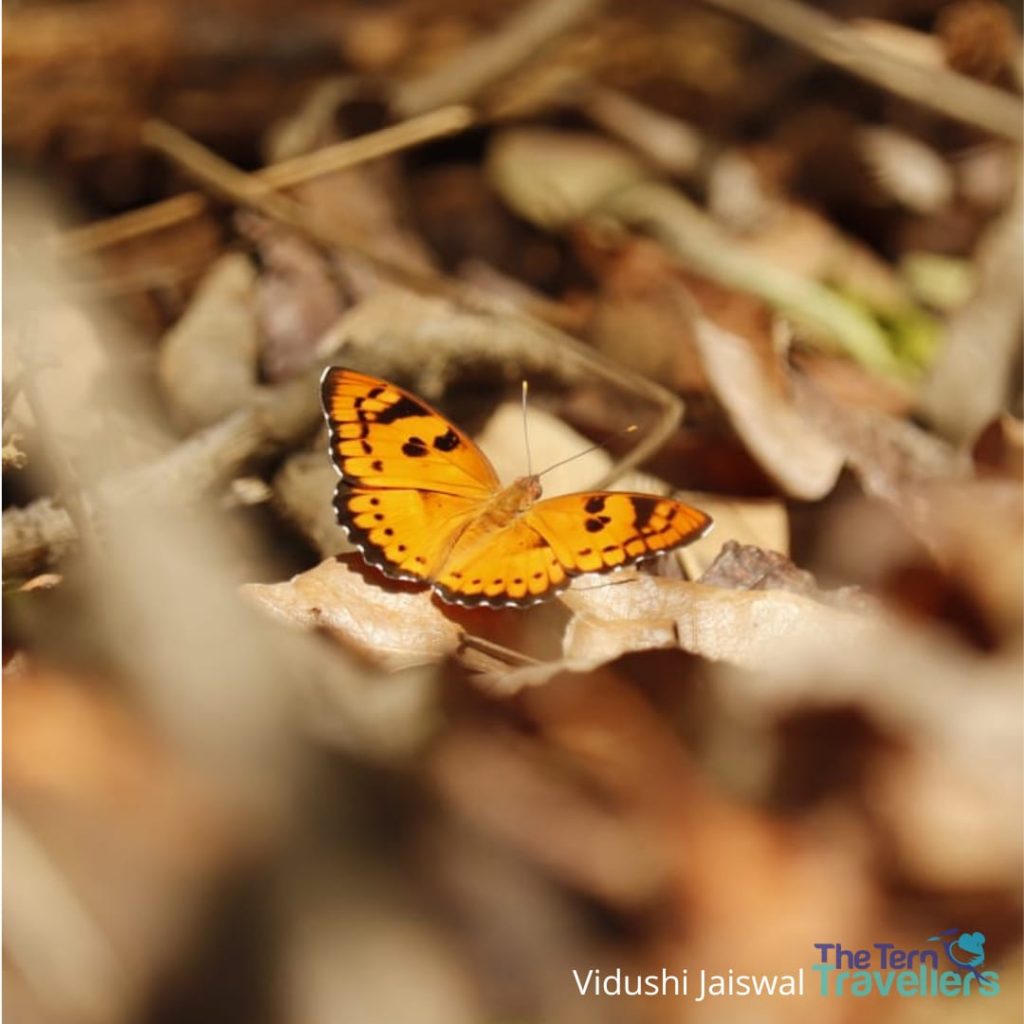
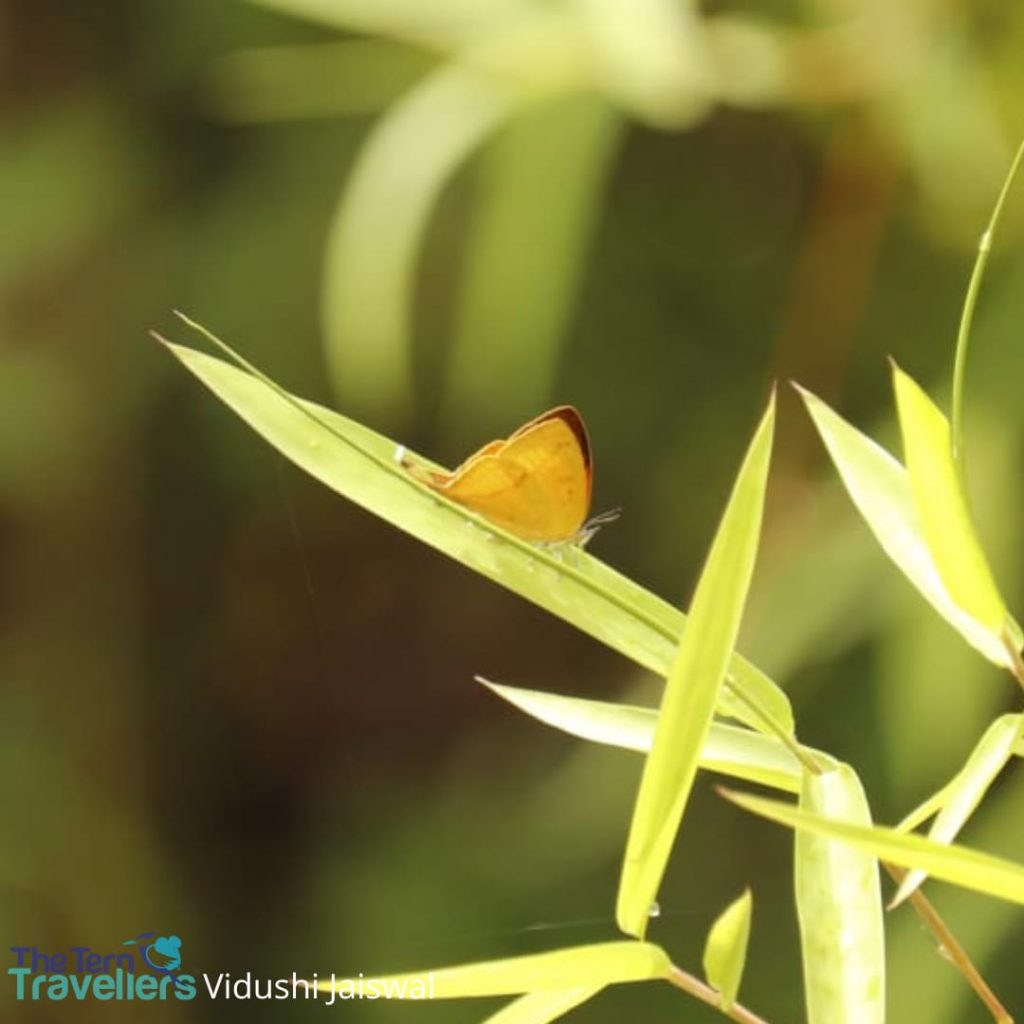
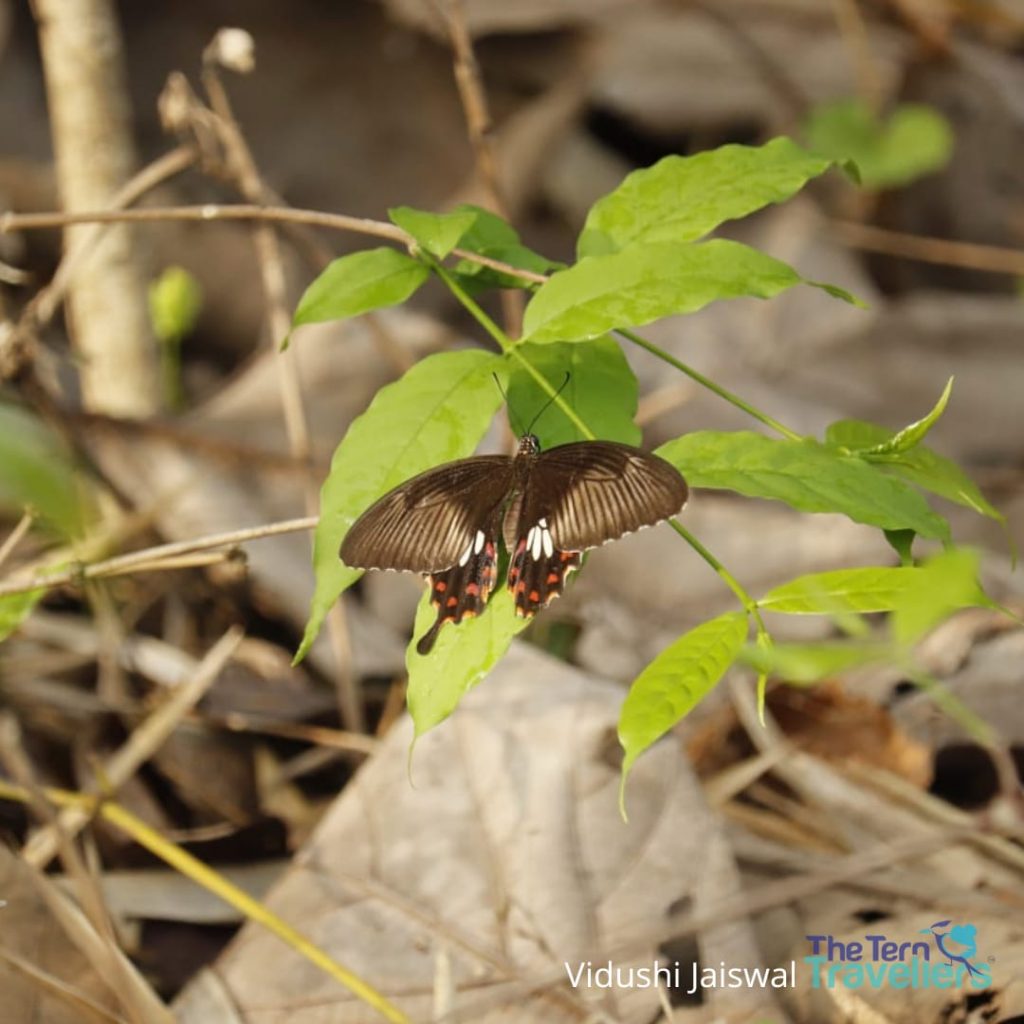
Excluding the butterflies, various other insects form the foundation of the forest. If you observe, you will see diverse beetles thriving inside the forest, all different kinds (Cicadas, Blister beetles, Ladybird beetles, Leaf beetles, Horned beetles etc.). Another insect component was the ant hills and ant nests built over trees. The most prevailing insect that we came across was the cotton stainers. It is named as it is for being a severe pest of cotton crops. The adults and older nymphs feeding on the emerging bolls and the cotton seeds transmit cotton-staining fungi.
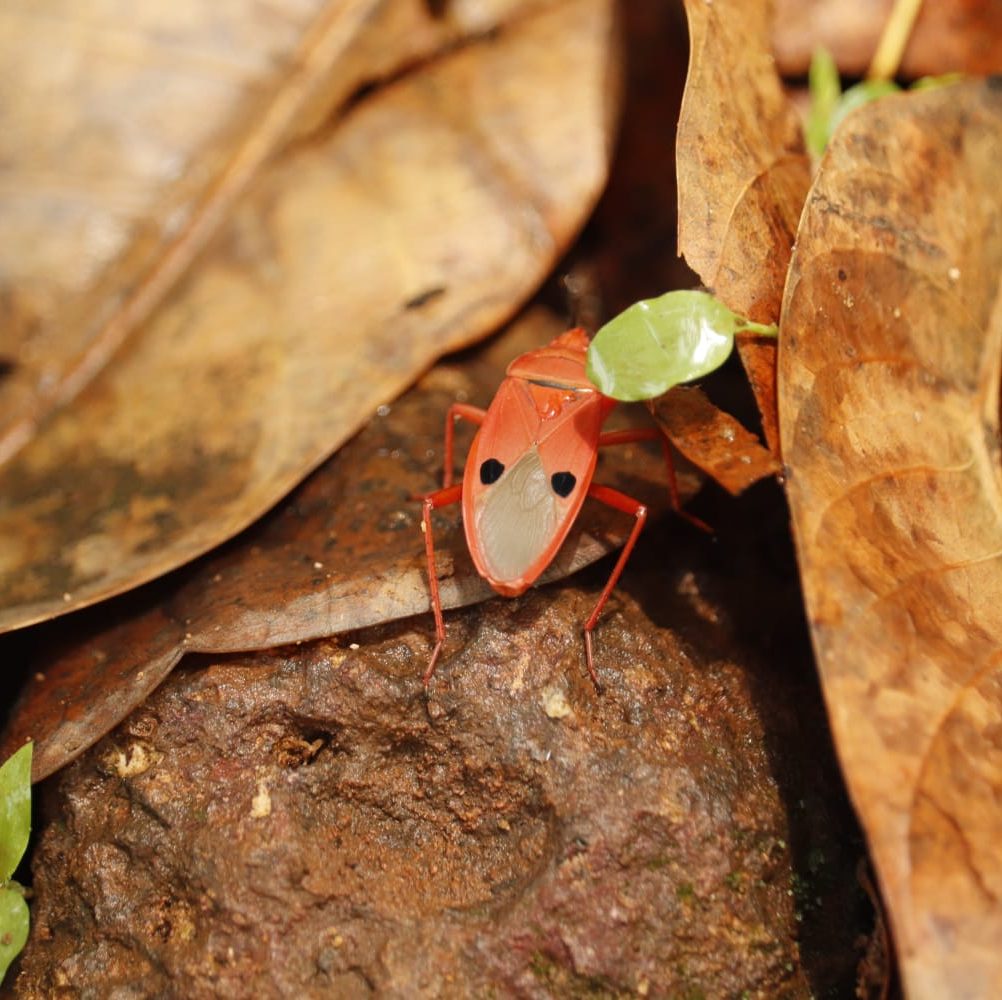
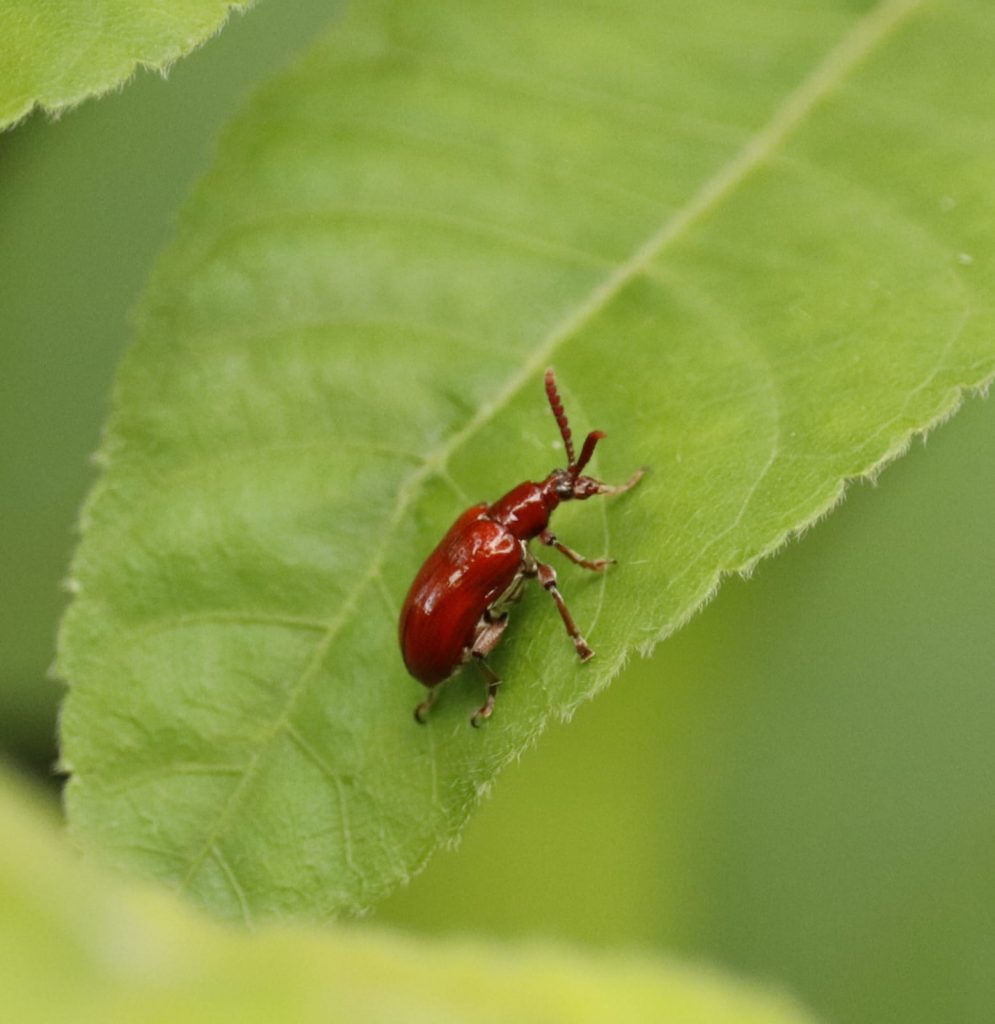
If you happen to hear a commotion in a nearby litter of leaves, follow the sound (PLEASE DO NOT RUN!) and observe till where it stops. You might be lucky enough to spot a snake or less fortunate like us to spot some extraordinary lizards. On our trail in the forest, we could spot two kinds, the Peninsular Rock Agama and the Forest Calotes. The Forest Calotes is considered the most widespread non-gecko lizard in the world. The best place to look to find the lizard will be on the rocks or tree trunks (close to the forest floor) because the insectivorous lizard seeks prey using a sit-and-wait strategy from a vantage point.
The Peninsular rock agama, as its name suggests, is an agamid lizard associated with rocky terrain in hilly areas of Southern India. It is a sexually dimorphic species; males are large and unique with bright red and black breeding colour on the head and dorsal surface of the body, females are smaller than males and are dull grey in colour without any contrasting markings.
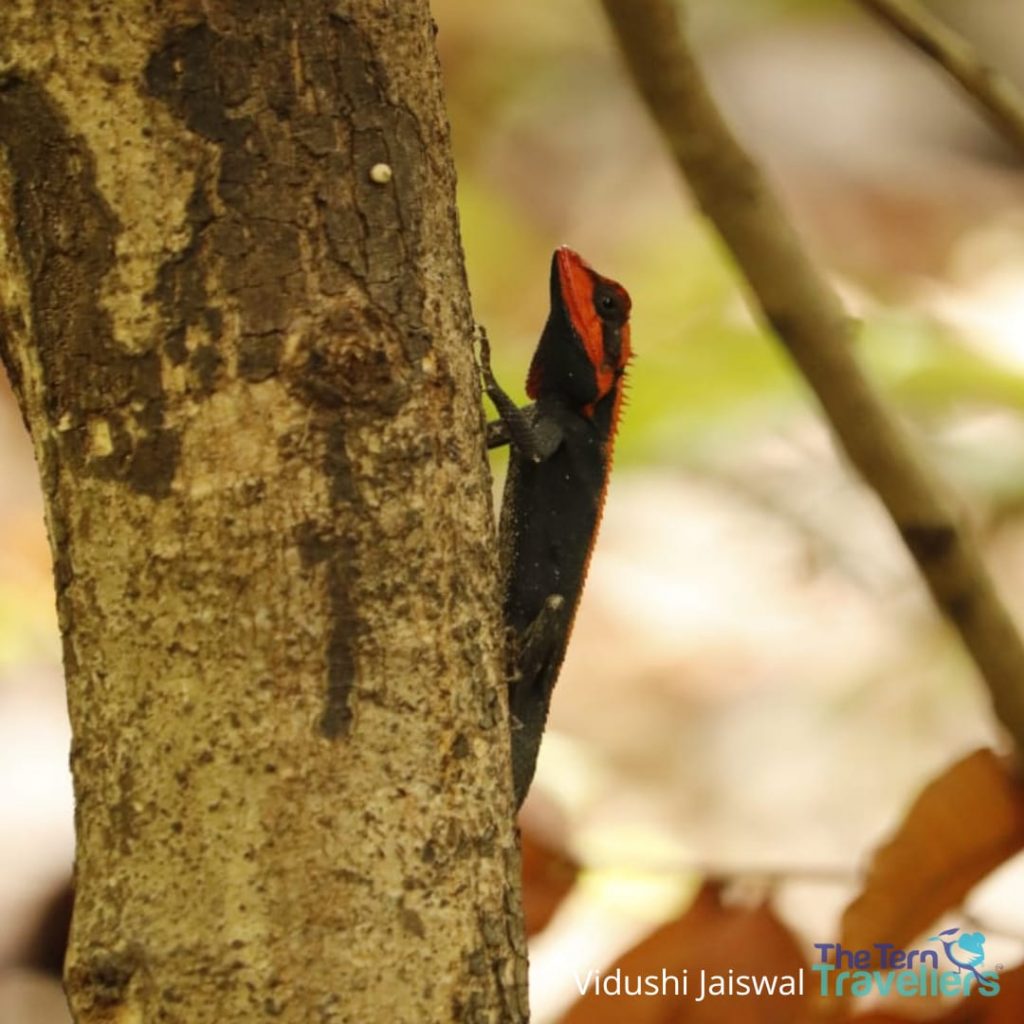
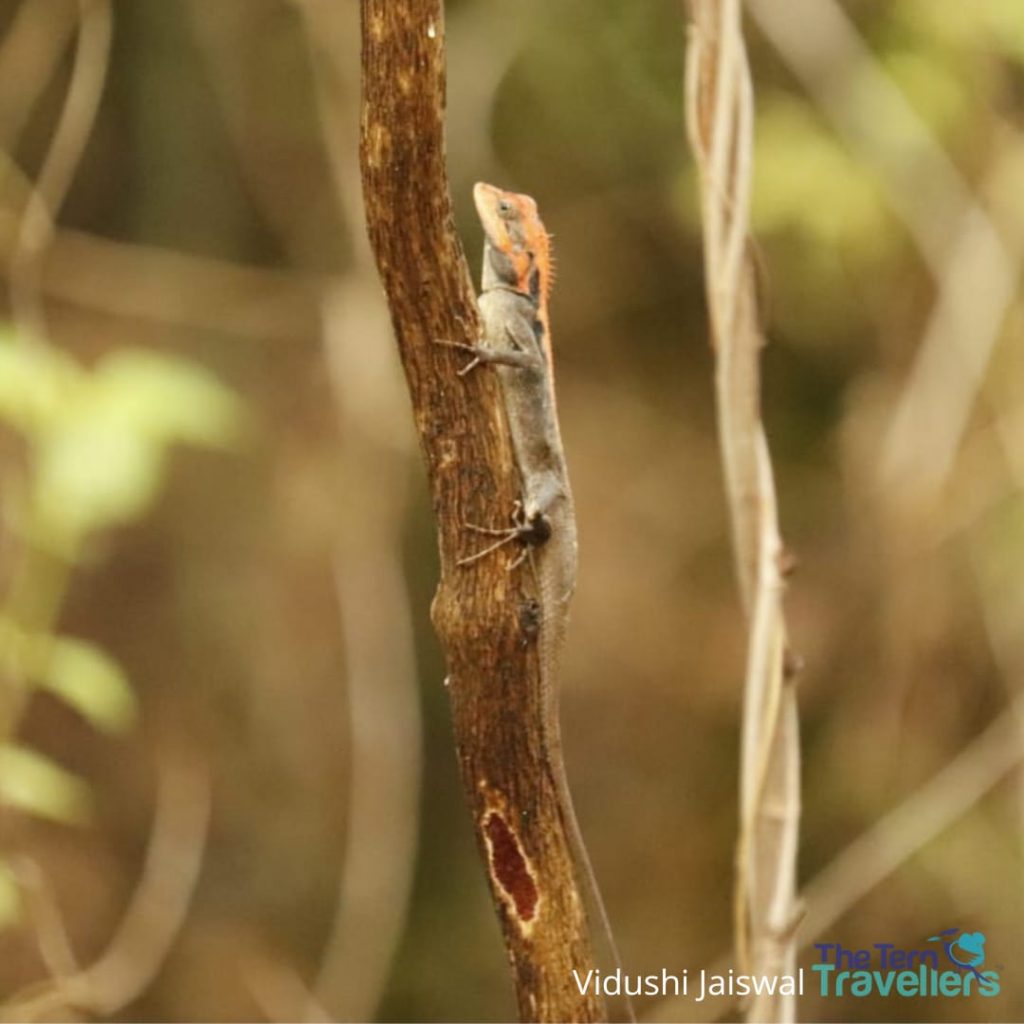
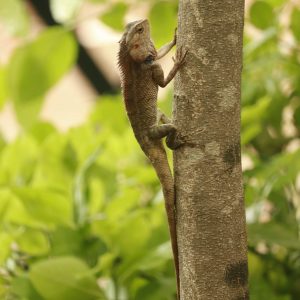
A BIRDIND PARADISE:
As mentioned above, the forest is a conjugation of two different forest types, favouring the indwelling of many endemic and rare birds. Forest birds like Drongos, Woodpeckers, Grey Hornbill, Bulbuls, Sunbirds, Robins, Barbets, Flycatchers, Bee-eaters, Flowerpeckers, Pittas, Iora, Orioles, Leafbirds, and Raptors like Kites and Eagles flourish in the dense cover. On the other hand, wading birds like Painted storks, Herons, Egrets, and Cranes prevail simultaneously. Some birds depend on both the creek and forest land inhabited here like the kingfisher and the sea eagles.
I must confess that I am very new to the birding family, and it will be a very long journey to become a good birder. To spot many birds in a forest so dense for an amateur like myself is vexing. And yet the forest was so generous that one of the most uncommon birds made an appearance only on my second visit (Trail). It flew right past me, an orange flash, and as I followed its movement into the deep branches … There it was sitting, ‘The Oriental Dwarf Kingfisher’ proud and resting.
There are many such jewels inside the Nagla forest like the White Rumped Shama, Indian Pitta (Narang), and the woodpeckers, which kept teasing me with their calls but stayed hidden. But they are there, and I cannot wait to go back to explore.
